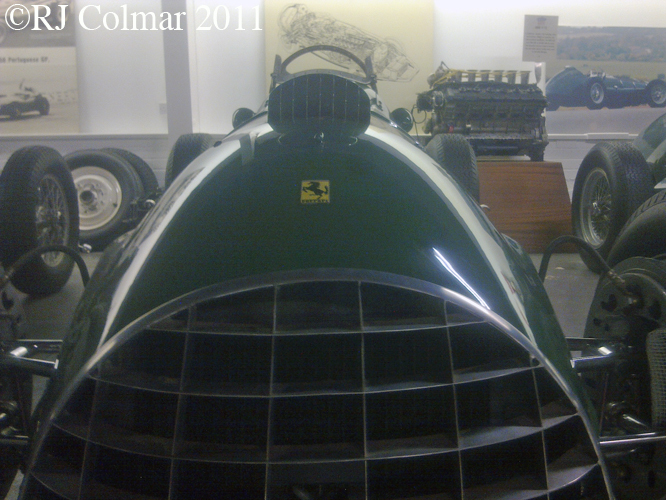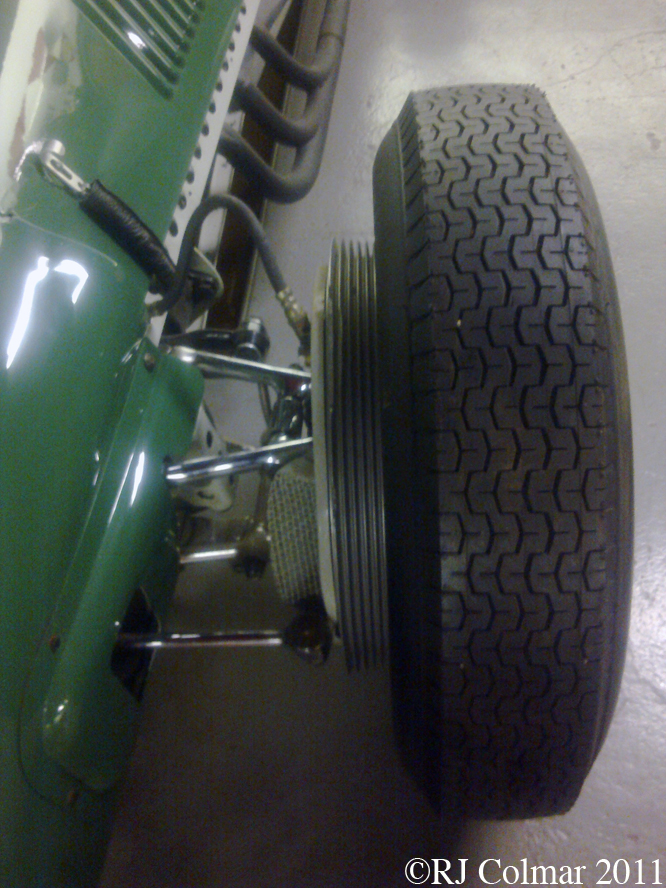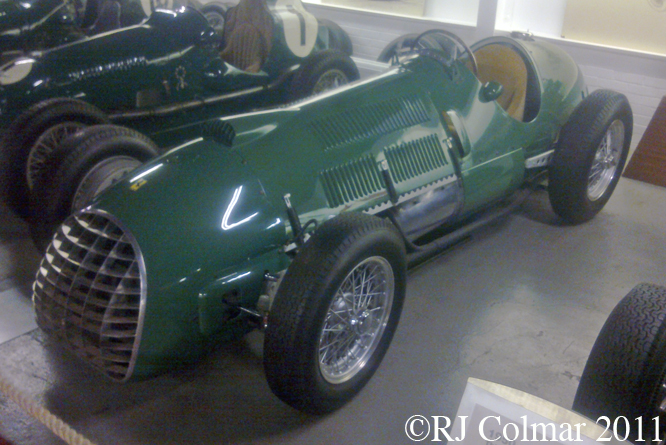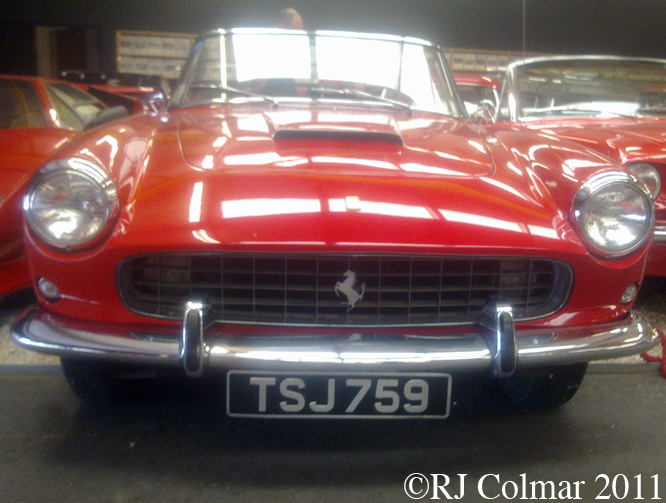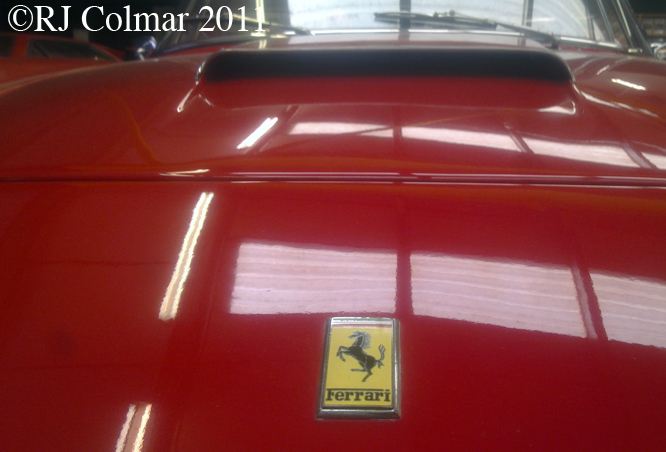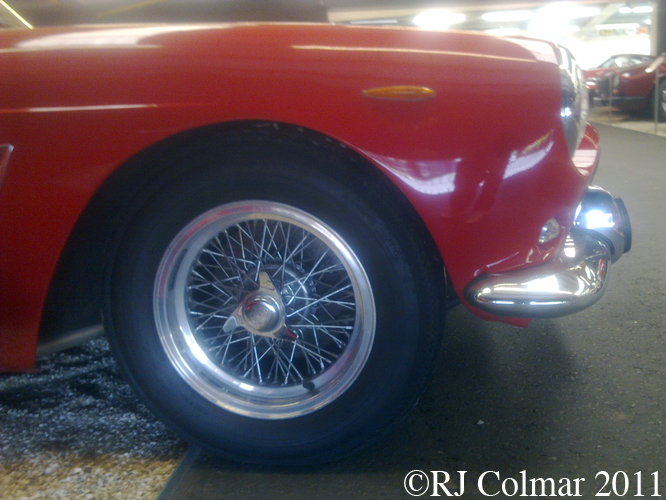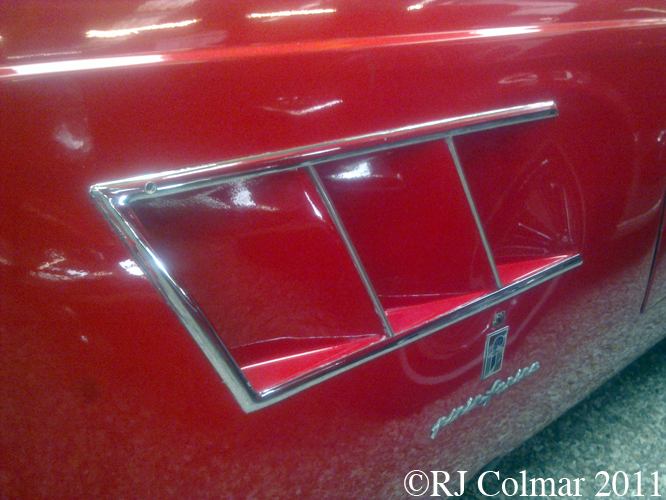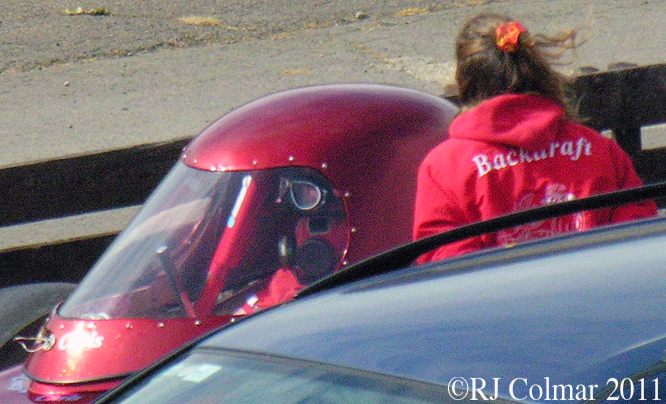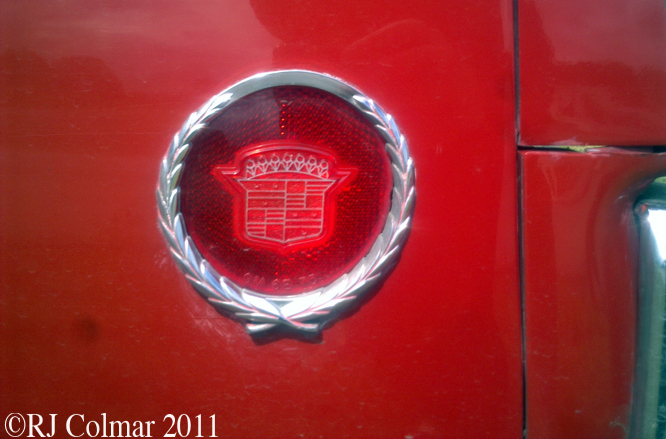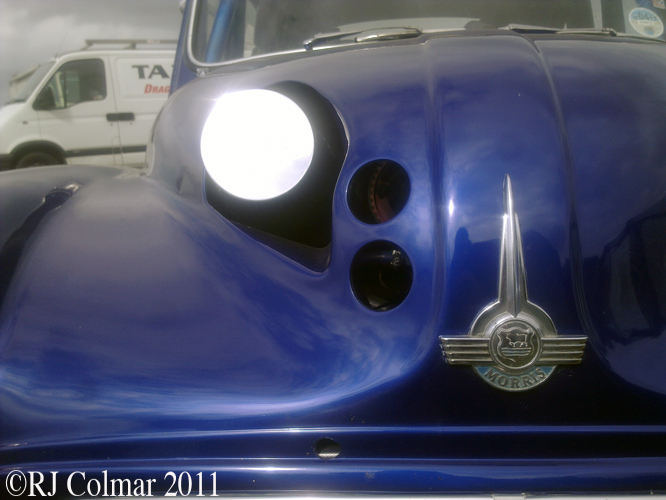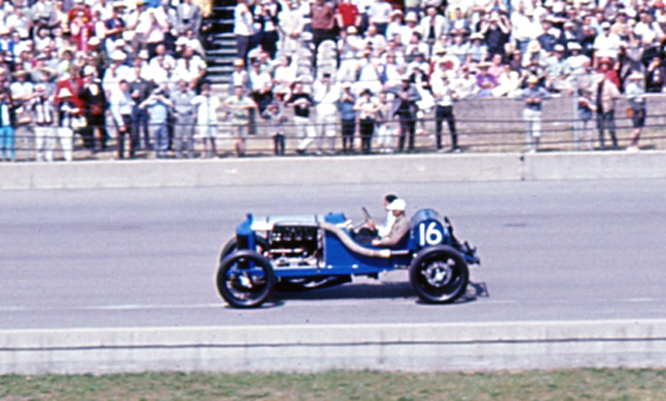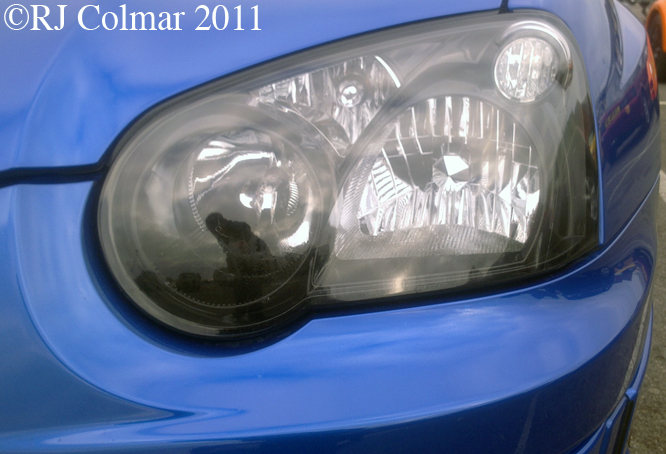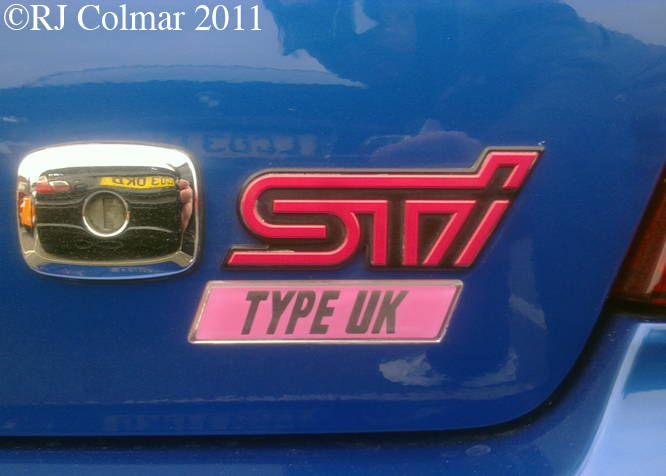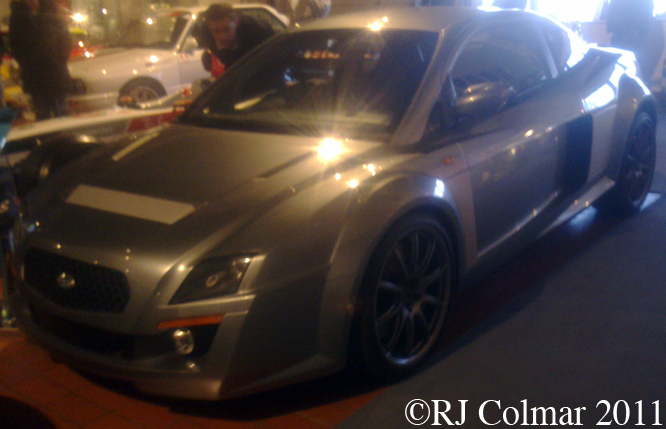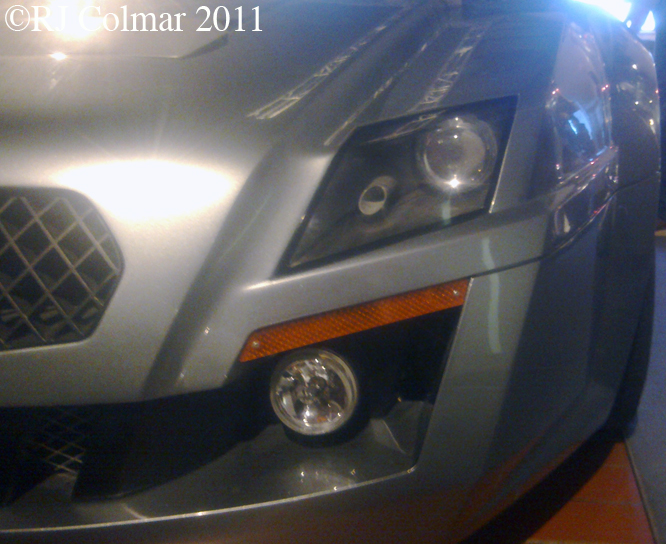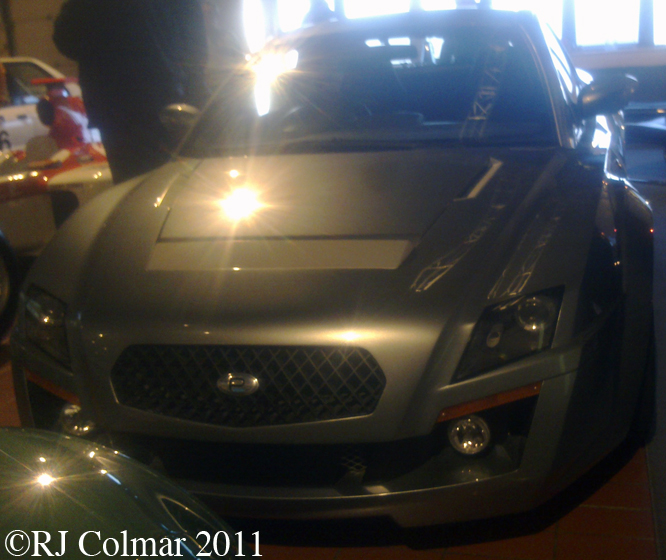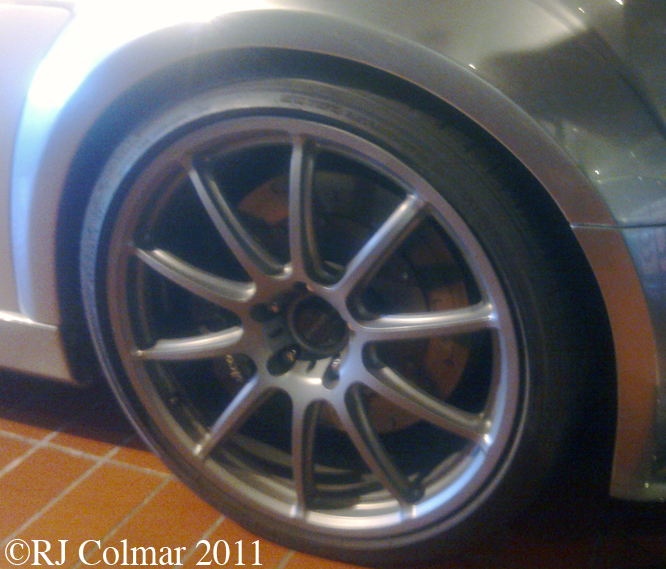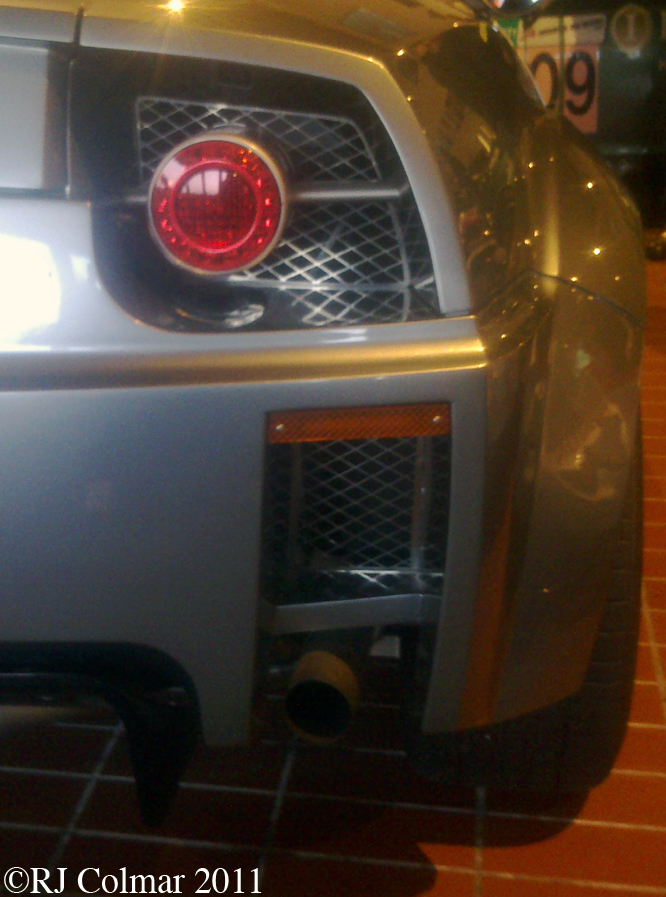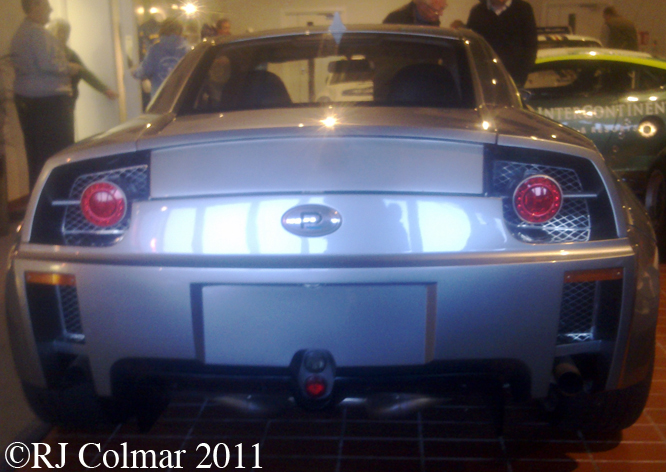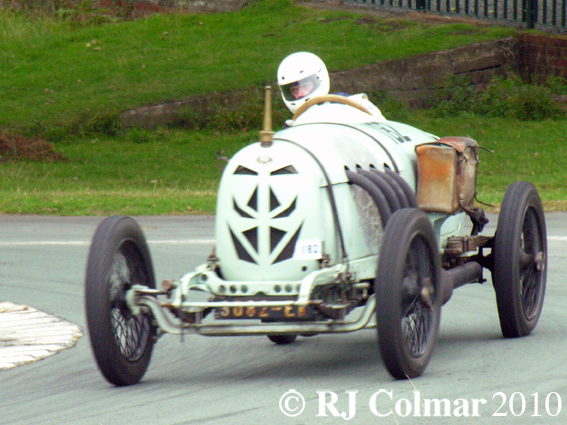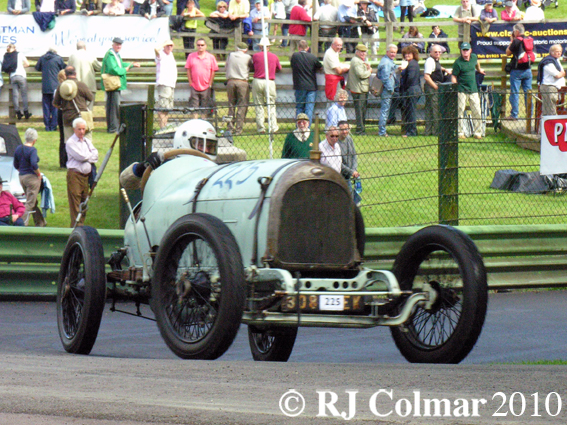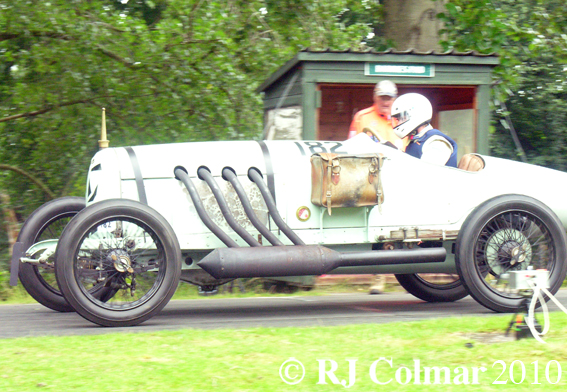In 1948 Ferrari built his first dedicated 125 F1 Grand Prix cars known to conform with the set of rules known as formula one and entered three of them into the 1948 Italian Grand Prix, held at Valentino Park on the 5th of September. Frenchman Raymond Sommer brought his 125 F1 home in third place. The Ferrari 125 WAS NOT however the first Ferrari ever to be entered in a race run to formula one regulations.
The 125 F1 shared it’s 1.5 litre / 91.5 cui super charged V12 engine design, by Giocchino Colombo, with earlier successful Ferrari sports cars including the 166 series and the 125S series.
This particular chassis thought to have been built in 1949 for the factory racing team, appears to have been successfully raced with a normally aspirated 2 litre / 122 cui Colombo V12 to conform to the second tier Formula Two regulations in 1951 by Englishman Peter Whitehead in Europe and Australasia.
During the late 1950’s this chassis had a Chevy V8 installed which was replaced by a remanufactured 2 litre V12 when Tom Wheatcroft had it restored in the 1970’s for his Donington Collection where these photographs were taken.
The 125 F1 was not a great success against the older Alfa Romeo’s, which led Ferrari to build his next formula one cars with larger unsupercharged engines with which one of his cars would win Ferrari’s first championship formula one race in 1951.
Thanks for joining me on this Ferrari Friday edition of ‘Gettin’ a lil’ psycho on tyres, I hope you will join me again tomorrow. Don’t forget to come back now !

